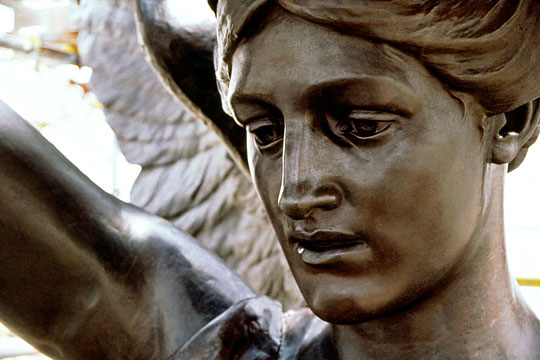Research on Wellington Arch
The history of the Wellington Arch was only known in bare outline before 1999, when it was transferred to English Heritage’s guardianship.

Recent Research
The only aspect which had been researched in detail before 1999 was the Wellington statue controversy, which was the subject of a book by John Physick.[1] When English Heritage assumed responsibility for the arch, Steven Brindle researched its history, including Jones’s Quadriga, and also the history of earlier schemes for a grand entrance to London at Hyde Park Corner.[2]
Research Gaps
The following areas and subjects could warrant further research:
- Decimus Burton’s early career and his sources for the design of the arch
- Matthew Cotes Wyatt’s early career, and the circumstances of his commission to create the Wellington Memorial
- the process of reconstructing the arch in the 1880s: no documents have yet been found relating directly to this, other than references to the contract payments to John Mowlem & Company for dismantling it[3]
- the history and use of Wellington Arch as a police station, between about 1886 and 1960
- the relandscaping of Hyde Park Corner, about 1958–62
- Hyde Park Corner as a setting for war memorials in the 20th and 21st centuries.
READ MORE ABOUT WELLINGTON ARCH
Footnotes
1. J Physick, The Wellington Monument (London, 1970).
2. S Brindle, ‘The Wellington Arch and the western entrance to London’, Georgian Group Journal, 11 (2001), 47–92; S Brindle, ‘Adrian Jones and the Wellington Arch quadriga’, Sculpture Journal, 6 (2001), 61–74; S Brindle and D Robinson, The Wellington Arch and the Marble Arch (English Heritage guidebook, London, 2001).
3. The National Archives, WORK 16/374.